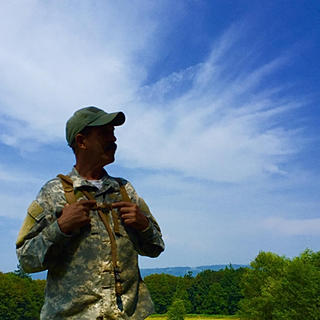Tactical Tracker/Combat Hunter, Another tool for the Commander
- Fernando Moreira
- May 22, 2019
- 3 min read
Visual tracking is not only an asset to Law Enforcement, but it is and can be a vital tool for the use of military operations. Tactical Tracking or, as it’s called in some militaries, Combat Hunters, can be used not only by conventional infantry units, or Special Operations units, but also in the military law enforcement side of the house too. For the combat arms, or personnel attached to a combat arms unit, the trackers can be a vital asset through finding sign of insurgents or main line enemy forces and be able to follow the sign to the enemy location. Through communication with the tracker team and it’s command element, proper planning to execute plans to conduct combat operations. These teams can also be used to pre-identify any routes of enemy forces, locate possible IED or other ‘booby traps’. Forces with Special Operations i.e. U.S. Army, U.S. Navy and U.S. Marine Corps that conduct Deep Reconnaissance Patrols, can utilize the trackers toolbox to not only find enemy routes, but to follow, locate and call in whatever weapons platforms to destroy the enemy location or call in a pre-planned raid. Members of these elite teams that are also tracker trained can be utilized in conducting a raid on a High Value Target (HVT) and begin the search for any ‘runaways’ or as some call, ‘squirters’.
Sniper teams with security element can be trained as trackers as well. As the “eyes” of the Battalion or as low as the Company, the snipers can locate sign of possible insurgent/enemy locations for possible ambushes, this goes for reconnaissance teams as well. One incident, of a trained individual occurred in Afghanistan, 2003. A Special Forces Group B-Team and it’s A-Teams had been ‘harassed’ by a poorly trained, poor shooting ‘sniper’, but still irritating. The B-Team Commander asked one of his attached ‘strap hanger’ soldiers if he (had some tracking skills) could possibly locate where the shooter was coming from. A general idea of the shooters location was known. The soldier, B-Team Commander and a security element went into the suspected area and within a short time the shooters location was found. Very visible sign of the person low stepping then crawling up a shallow run off, approximately 1-2 feet deep, taking a shooting position, the individual even left spent brass. Sign of the shooter was found of him egressing and sign of a motorcycle parked and leaving. Counter-sniper teams were employed and the same evening of the day the sign was found, the threat was eliminated.
Military law enforcement can benefit from tracker training as well. While maintaining security of field operated EPW camps and even at larger more secure sites, having trained police/correctional or augmented ‘guard forces’ trained to track in the event of an EPW escape. Never say never, it may happen.
Another group that would greatly benefit from visual tracker training are the U.S. Air Force Pararescuemen or, PJ’s. Their main mission is the recovery and rescue of downed aircrews. A time may come (or may have already…) where a PJ team was inserted to rescue a crew/crewmember only to find that the person(s) had moved on to possibly evade capture. Tactical Tracking/Combat Hunter skills will increase their chances of making contact, especially if comm’s are down. Other teams that this training would benefit are U.S. Army Aviation Downed Aircraft Recovery Teams, U.S. Navy Search And Rescue, and Marine units that are participating in Tactical Recovery and Aircraft and Personnel (TRAP).
One week, of specialized Tactical Tracking/Combat Hunter training added to a pre-deployment training package may possibly save the lives of U.S., and Coalition military members and or recovery of lost crew. And quick recovery of escaped EPW that may, if not recaptured cause damage to innocent people.
When these units, whether conventional or special operations get ‘boots on the ground’, the trackers should start training in the area they’re working in. Is it sandy? Marshy, swampy or heavily forested? Is it a rural operations or also urban areas.
Tactical Trackers/Combat Hunters are a valuable asset to any weapons platform and give commanders on the ground one more tool to defeat the enemy.





Comments